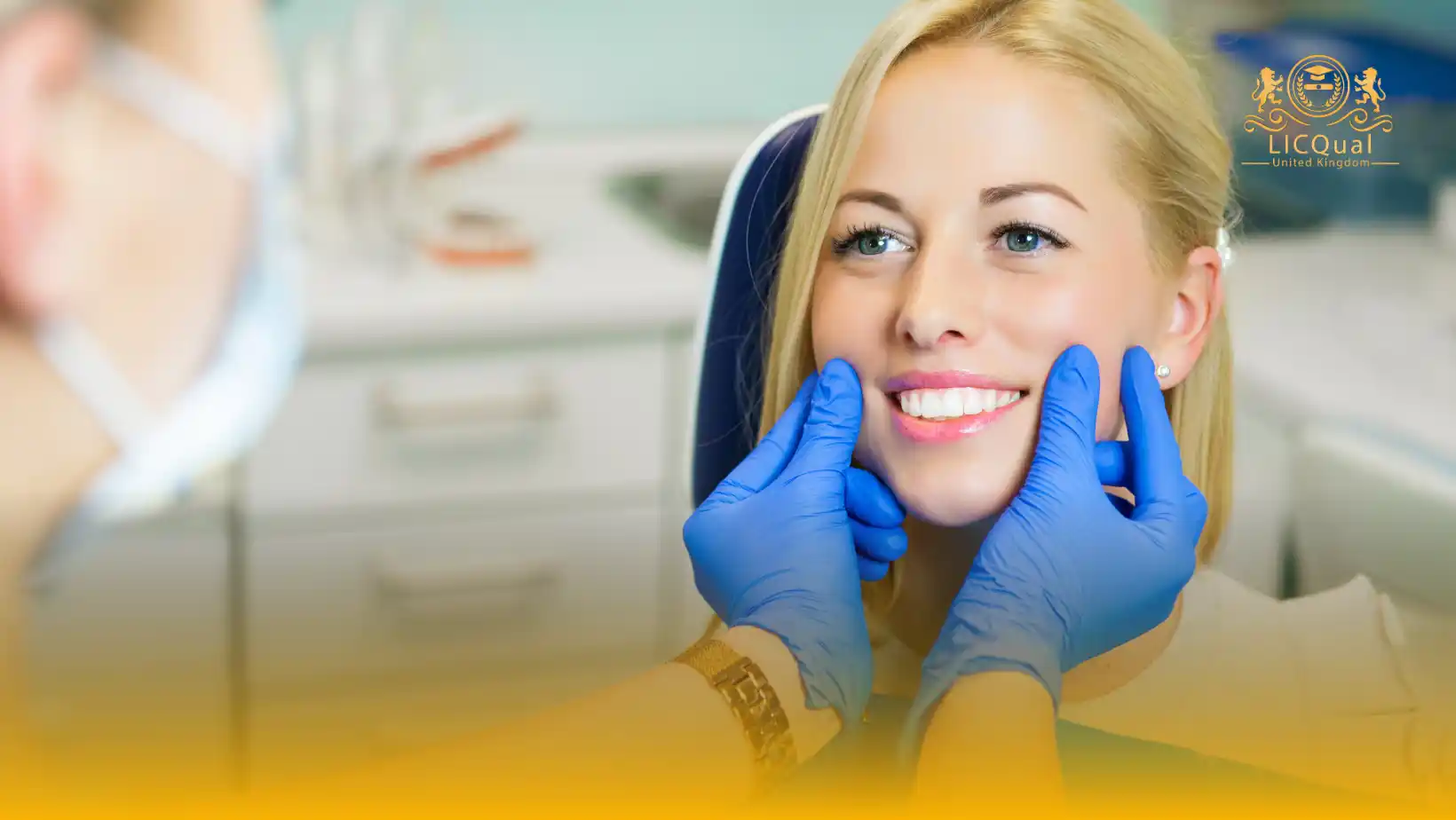The LICQual Level 3 Diploma in Aesthetic Dentistry is a specialised qualification designed for dental professionals who wish to advance their skills, broaden their expertise, and achieve higher recognition in the field of aesthetic and cosmetic dentistry. This programme goes beyond foundational training, focusing on advanced techniques and evidence-based practices that empower learners to deliver outstanding patient outcomes.
Unlike entry-level qualifications, this diploma is not intended for beginners but for experienced practitioners aiming to strengthen their career prospects, meet industry standards, and expand their Continuing Professional Development (CPD). By completing this programme, learners gain the knowledge and practical competence required to excel in a competitive and evolving dental sector.
Centres offering the LICQual Level 3 Diploma in Aesthetic Dentistry must ensure that they have highly competent and qualified staff, as well as access to appropriate clinical facilities, modern equipment, and relevant study resources. This guarantees that every learner benefits from a robust, engaging, and high-quality learning experience, enabling them to apply advanced aesthetic dentistry techniques with confidence.
This diploma is an excellent choice for dental professionals who wish to refine their clinical expertise, enhance patient satisfaction, and build a strong reputation in the field of aesthetic dentistry. It supports professional growth, contributes towards CPD requirements, and provides a valuable platform for learners aspiring to progress towards more advanced qualifications and specialisations within dentistry.
Course Overview
Qualification Title
LICQual Level 3 Diploma in Aesthetic Dentistry
Total Units
6
Total Credits
60
GLH
240
Qualification #
LICQ2200663
Qualification Specification
To enroll in the LICQual Level 3 Diploma in Oral Medicine, applicants must meet the following criteria:
|
Qualification# |
Unit Title |
Credits |
GLH |
|---|---|---|---|
|
LICQ2200663-1 |
Principles and Foundations of Aesthetic Dentistry |
10 |
40 |
|
LICQ2200663-2 |
Facial and Dental Anatomy for Aesthetic Procedures |
10 |
40 |
|
LICQ2200663-3 |
Diagnostic Tools and Treatment Planning in Aesthetic Dentistry |
10 |
40 |
|
LICQ2200663-4 |
Restorative Techniques in Aesthetic Dentistry |
10 |
40 |
|
LICQ2200663-5 |
Advanced Clinical Skills in Aesthetic Procedures |
10 |
40 |
|
LICQ2200663-6 |
Professional, Ethical, and Legal Considerations in Aesthetic Dentistry |
10 |
40 |
By the end of this course, learners will be able to:
Unit 1: Principles and Foundations of Aesthetic Dentistry
- Understand the historical development and scope of aesthetic dentistry
- Identify the key principles of smile design and dental aesthetics
- Analyse the relationship between aesthetics, function, and oral health
- Evaluate the role of patient-centred care in aesthetic dentistry
- Apply evidence-based knowledge to aesthetic treatment approaches
Unit 2: Facial and Dental Anatomy for Aesthetic Procedures
- Demonstrate knowledge of craniofacial and dental anatomy relevant to aesthetics
- Identify anatomical landmarks critical to aesthetic treatments
- Understand the physiology of soft and hard tissues involved in dental aesthetics
- Assess how variations in anatomy affect aesthetic dental outcomes
- Apply anatomical knowledge to treatment planning and execution
Unit 3: Diagnostic Tools and Treatment Planning in Aesthetic Dentistry
- Understand the role of diagnostic imaging and photography in aesthetic dentistry
- Apply digital smile design and other modern diagnostic techniques
- Develop effective patient assessments for aesthetic treatment planning
- Formulate comprehensive and personalised treatment plans
- Evaluate the risks, benefits, and limitations of aesthetic dental procedures
Unit 4: Restorative Techniques in Aesthetic Dentistry
- Demonstrate knowledge of restorative materials used in aesthetic dentistry
- Apply techniques for veneers, crowns, bonding, and whitening procedures
- Understand the role of minimally invasive approaches in restorative aesthetics
- Evaluate case studies to select appropriate restorative solutions
- Apply safe and effective methods for delivering restorative treatments
Unit 5: Advanced Clinical Skills in Aesthetic Procedures
- Demonstrate advanced operative skills for aesthetic dental treatments
- Apply clinical techniques to achieve natural and functional outcomes
- Understand infection control and patient safety in aesthetic practice
- Analyse clinical challenges and problem-solving strategies
- Apply reflective practice to improve clinical performance
Unit 6: Professional, Ethical, and Legal Considerations in Aesthetic Dentistry
- Understand ethical responsibilities in aesthetic dental practice
- Analyse the importance of informed consent and patient communication
- Apply legal and regulatory requirements in aesthetic dentistry
- Evaluate professional standards and codes of conduct
- Demonstrate commitment to CPD and continuous improvement
The LICQual Level 3 Diploma in Aesthetic Dentistry is ideal for dental professionals eager to expand their expertise in cosmetic and aesthetic treatments. This course is designed for individuals who want to master modern smile enhancement techniques, develop clinical precision, and gain international recognition in the field of aesthetic and restorative dentistry. Whether you’re an experienced dentist, dental hygienist, or technician, this Level 3 Aesthetic Dentistry Diploma helps you advance your career, attract new clients, and deliver high-quality, confidence-boosting results.
1. Practicing Dentists Looking to Specialize in Aesthetic Dentistry
- Perfect for general dentists aiming to enhance their clinical portfolio with cosmetic procedures.
- Develop advanced skills in smile design, veneers, whitening, and restorative treatments.
- Learn the latest global standards in cosmetic and aesthetic dentistry.
- Build a strong foundation in ethical and patient-centered aesthetic practices.
- Gain an internationally recognized qualification to boost your professional credibility.
2. Dental Hygienists and Therapists Seeking Career Growth
- Expand your scope of practice by learning aesthetic and cosmetic techniques.
- Understand the integration of hygiene and cosmetic care for complete smile transformations.
- Learn how to assist in aesthetic dental procedures effectively.
- Gain practical knowledge on patient communication and aesthetic treatment planning.
- Strengthen your profile in clinics offering advanced aesthetic dentistry training Level 3.
3. Dental Technicians and Laboratory Professionals
- Develop a deep understanding of how aesthetic restorations are designed and applied.
- Learn about material selection, color matching, and digital smile design.
- Collaborate effectively with dentists on aesthetic and restorative dentistry projects.
- Improve precision in crafting crowns, veneers, and bridges with artistic excellence.
- Stay updated on the latest laboratory innovations in aesthetic dental technology.
4. Recent Dental Graduates Starting Their Career
- Build confidence in performing aesthetic procedures early in your professional journey.
- Learn practical applications through guided modules and real-world case studies.
- Understand patient needs and aesthetic goals for personalized dental care.
- Strengthen your resume with an internationally accredited aesthetic dentistry qualification.
- Gain a competitive advantage when entering private practices or advanced clinics.
5. Cosmetic Dentists Seeking Professional Certification
- Earn formal recognition for your skills in aesthetic and cosmetic dentistry.
- Update your techniques to align with international dental standards.
- Explore advanced areas like smile analysis, facial symmetry, and digital design.
- Improve your ability to handle complex cosmetic cases effectively.
- Position yourself as a trusted expert in aesthetic smile transformation.
6. Dental Educators and Trainers
- Enhance your teaching profile with a Level 3 Diploma in Aesthetic Dentistry.
- Stay informed about evolving trends and innovations in dental aesthetics.
- Gain structured insights into course design and curriculum development.
- Share evidence-based knowledge with students and junior professionals.
- Contribute to raising global standards in aesthetic dental education.
7. International Dental Professionals and Career Changers
- Perfect for globally mobile professionals seeking UK-accredited qualifications.
- Learn modern aesthetic techniques adaptable to diverse clinical environments.
- Understand international regulations and patient expectations.
- Build a global career in aesthetic and cosmetic dentistry with confidence.
- Transition smoothly into high-demand roles in private dental practices worldwide.
To deliver the LICQual Level 3 Diploma in Aesthetic Dentistry effectively and in line with international standards, approved centres must meet the following requirements:
- Qualified and Experienced Staff: Centres must employ suitably qualified dental professionals and trainers with relevant expertise in aesthetic and cosmetic dentistry.
- Clinical Facilities: Access to safe, hygienic, and fully equipped clinical environments where learners can develop both theoretical knowledge and practical skills.
- Learning Resources: Availability of up-to-date study materials, dental equipment, diagnostic tools, and digital resources to support high-quality learning.
- Assessment Capabilities: Robust systems in place for fair, transparent, and consistent learner assessment and feedback.
- Support Services: Provision of academic guidance, learner support, and access to Continuing Professional Development (CPD) resources.
- Compliance with Regulations: Centres must adhere to all relevant professional, legal, and ethical standards in dental education and practice.
- Commitment to Quality Assurance: Implementation of strong quality assurance processes to ensure training excellence and learner success.
These requirements ensure that learners receive the highest standard of training, combining advanced theory with practical application, and are fully prepared to excel in the field of aesthetic dentistry.
Assessment and Verification
All units within this qualification are subject to internal assessment by the approved centre and external verification by LICQual. The qualification follows a criterion-referenced assessment approach, ensuring that learners meet all specified learning outcomes.
To achieve a ‘Pass’ in any unit, learners must provide valid, sufficient, and authentic evidence demonstrating their attainment of all learning outcomes and compliance with the prescribed assessment criteria. The Assessor is responsible for evaluating the evidence and determining whether the learner has successfully met the required standards.
Assessors must maintain a clear and comprehensive audit trail, documenting the basis for their assessment decisions to ensure transparency, consistency, and compliance with quality assurance requirements.







